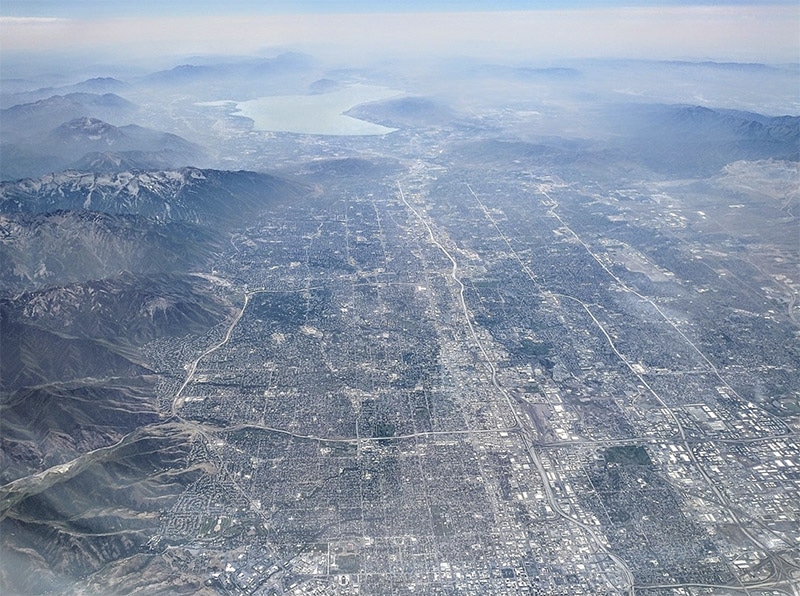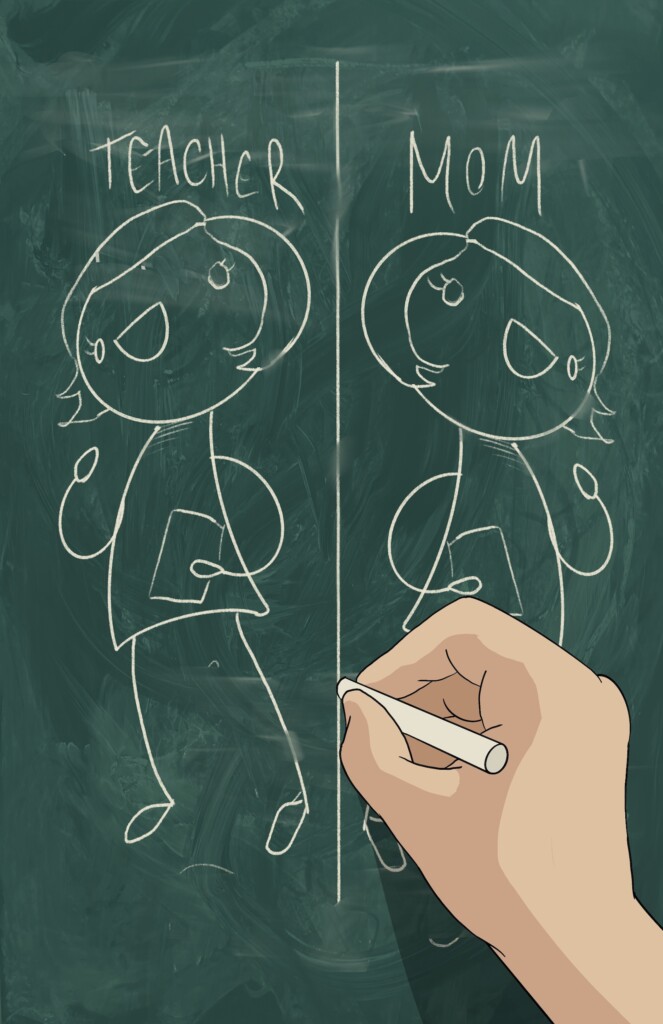Opinion
Just twenty-five years ago Salt Lake City’s tech sector was a tiny piece of the economic picture of the region, Geneva’s plant in Vineyard, Utah was still producing thousands of tons of steel and Utah’s mining industries and toxic waste disposal were leading sectors of the economy. Back then an “inland port” offering more jobs, more traffic to Salt Lake City’s airport and money for critical infrastructure and schools — might have sounded like a great idea.
Also twenty five years ago the Great Salt Lake was full to near record levels and the bird population was fine. Nobody could have predicted that there would be a two-decade “mega drought” and an ecological collapse of the bird and insect population of our Great Lake of the West.
But how things have changed in just twenty five years. Nobody could have predicted that Utah’s (highest-in-the-nation birth rate) would no longer be the sole driver of population growth but immigration would nearly supersede the birth rate. In just 30 years our population along the Wasatch Front has increased by more than double (from 1 million to 2.5 million today). We will have 4 million people in Utah (occupying a tiny sliver of the total landmass of the state) in ten years.

Nobody would have predicted that Utah’s tech sector, construction industries would create thousands of jobs, and with 16,000 thousands of jobs that remain unfilled. Nobody would have predicted that the bird population and ecosystems around the Great Salt Lake would also collapse, and environmental concerns would top the economy and jobs in residents priorities.
But changes do happen and they can’t be ignored. Yet despite these clear shifts in priorities the inland port authority leaders are moving ahead with a plan that sounds like something that might have been a good idea twenty-five years ago. They are driving forward as if we liveing in the economy where everyone still listens to punk music from the Cure on Walkmans.
Political leaders are driving the inland port forward ignoring the concerns of those who remind them they are not only driving forward an economic priorities of two decades ago, but they are now creating a situation that is obviously more detrimental to the environment and the impact especially to Utah’s West side residents and ethnic minorities. These concerns fall on the deaf ears of the Inland Port Board Authority, a group who are playing musical chairs in terms of leadership, in hopes that no one person takes the brunt of the blame for this highly unpopular idea.
The current Port Authority Chair is West Valley City’s Attorney Nicole Cottle. If she cared about the residents in her district she would certainly step down or take measures to end all taxpayer funding and support of the Inland Port.
Instead, the inland port charges forward, and ignores the opposition. The group of Inland Port cronies connected to political interests are all unelected but appointed as “leaders”. They are appointed because no elected politician could ever survive the stupidity of an inland port built on the shores of the Great Salt Lake.
Didn’t our founding fathers revolt against taxation without representation? What about poor, harmful and toxic decision making without representation?
Why aren’t any of these board members able to examine the shifting demographics and the growth of the Salt Lake valley in considering their decision making? The main priority of the Governor’s Office of Economics (GOED) should be putting on the brakes of Utah’s economy ,for harmful polluting business, instead they are slamming on the accelerator. Let’s examine the folly of where the port stands today.

Currently the average price of a home in Salt Lake County stands at $485,000. More minorities and lower-income folks who can’t afford these housing prices are moving to West Valley, The West Side of Salt Lake City, Magna, Stansbury, Tooele and further out beyond South Jordan to Herriman with more developments planned that will be shifting more people down lower into the valley, where the air quality is always worse than the east-side of the valley on inversion days.
Why is this significant?
As the population of the Wasatch Front continues to swell, it’s these western locals where the most population growth will occur. This will certainly further the gap between the east-side residents and the west-side (the rich and the poor). This will inevitably put more pressure on our infrastructure because many of these residents will likely be commuting into Salt Lake City or surrounding areas.
This unforeseen population boom (along with the inland port) will exacerbate the detrimental impact of the pollution and congestion to west-side resident’s health and living standards.
The inland port is certain to increase emissions, semi truck traffic and diesel emissions, airline traffic and emissions as well as mosquito abatement pesticide in and around where the port is located. No matter how many attempts they make to call the port “green”, there is no side-stepping the facts. An international shipping and receiving center will increase pollution and congestion where we need it least.
Mitigating the environmental impact for those who are in closest proximity to the pollution and the traffic increases is impossible under our growth trajectory.
For this reason the Inland Port Authority Board added members to their Advisory Council, who could represent the west side residents and offer their input on the policies that could be most harmful to West side residents. Providing a voice to the most ethnically diverse area of Utah, was a critical step in the right direction by the Inland Port Authority Board of Directors.
However, The Inland Port Authority Board has now removed all advisors who were representing the west side, (Salt Lake Tribune reported). Those members’ are Dorthy Holman and Richard Owen. Both representatives of the West Side, who had concerns over the environmental impact of the inland port are now gone — ousted from the council.
The Salt Lake Tribune reports:
Just months after its inception, [the Inland] port authority leaders dismissed two west-side community members from the advisory council and a subcommittee dedicated to air quality and the environment.
One of those members who was released by the board told the Salt Lake Tribune:
“There’s just no getting around it that they are compromising the health, quality of life and safety of west-side residents without any compunction whatsoever to do what they said they would do,” Holman said, “and that’s to engage the community, get their input, listen to their concerns.”
-Richard Owen
They are enacting policies that will adversely impact the people in the Salt Lake Valley who have both dark skin and less money.
In Our Opinion
The complete ignoring of the West-end valley residents rejection of this current plan is nothing short of economic bigotry. This is Utah’s plutocracy (a government by the rich for the rich) at work. This is the Good Ol’ boys club deciding what’s best for them, at the expense of the working poor. This is health tax without representation, but luckily more leaders are beginning to realize this.
There is some good news concerning the inland port in recent weeks, Citizens have won a minor victory. Political leaders are finally being forced to listen to the outraged citizens.
Utah Physicians for a Healthy Environment along with The Stop The Polluting Port Coalition, led a protest against the inland port out in front of the Inland Port’s offices. Demonstrators spoke, including Deeda Seed, the program’s director. Sensing that the Port’s growing unpopularity, Salt Lake City Mayor Errin Mendenhal also spoke.
The Mayor and the Salt Lake City Council are delaying a vote on the recommendation for a $150 million bond. Inland Port CEO, Jack Hedge, who Utah Stories previously spoke to concerning the environmental concerns over the inland port –determined the vote indeed needed to be delayed, because they are losing steam. But the big question:
Will This Delay in Approving the Bond For the Inland Port Make Any Difference?
That remains to be seen. This is certainly a hick-up, and the Inland Port Authority needs lots and lots of money to move forward. But if more members of the community come on board to protest the port, show their dismay and reject this clear economic bigotry, then maybe there is still a chance one of the dumbest ideas for economic development to come down the pipe in history could be stopped.
Do you want to get involved? Go check out the Stop the Polluting Port Coalition https://www.stopthepollutingport.org/about
Check out their long list of stakeholders who are now on board with preventing the inland port from moving forward. Attend a rally. Learn about the harm it will do to the Great Salt Lake, the migratory bird population, the landscape around the shore of the Great Salt Lake — Get informed.
Previous Inland Port story concerning the legality of the Inland Port.
Expert Interviews Concerning the Inland Port.
Thanks to our sponsors of the show:
Wasatch Brewery: Celebrating their 35th-year anniversary
Subscribe to Utah Stories weekly newsletter and get our stories directly to your inbox





